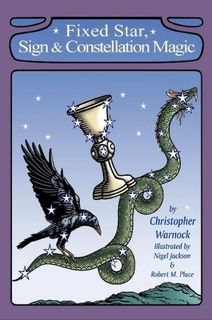The Zodiac is a key component of astrology, a 360 degree circle that allows us to very precisely pinpoint the location of any celestial object. Traditional astrology uses a Tropical Zodiac, which is oriented to the seasons. You can see a detailed explanation of traditional astrology and the Tropical, Sidereal and Constellational or Astronomical Zodiacs. In addition, by using any Zodiac, the fixed star are mapped from their relative location in the three dimensional celestial sphere to the two dimensional plane of the Zodiac. In effect, the Zodiacal longitude of the fixed stars, which is what traditional astrology uses to locate them, represent sensitive points that are connected to the fixed stars.
Another important consideration for the fixed stars is the precession of the equinoxes. This is an approximately 26,000 year cycle, the Great Year, which is the source of the Ages of the Zodiacal signs, like the Age of Aquarius that we are familiar with. As a practical matter the Zodiacal longitude of the fixed stars moves about a degree every 72 years. So traditional astrology uses the fixed stars, mapped to the Tropical Zodiac and precessed to take account of the precession of the equinoxes.
Each constellation and often individual fixed stars in the constellation were sometimes classified as being similar to one or more planets. For example, the fixed star Aldebaran, was
considered to be of the nature of Mars. Ptolemy Tetrabiblos Bk. I, Chapter 9 (Loeb, 1940) page 47.
Anne Wright has an excellent
Fixed Star & Constellation Web Site which gives
much useful information on the nature of the various fixed stars.
This classification is a convenient way of understanding the fixed stars and constellations, but it has been misinterpreted as meaning that somehow the planets rule the fixed stars or constellations. As we have seen the sphere of the fixed stars is above the planetary spheres and in fact it is more correct to say that the fixed stars have power over the planets.
Each fixed star was at the top of many individual chains
comprising the Great Chain of Being. The Renaissance philosopher and astrologer
Marsilio Ficino says,
"I have said elsewhere that down from every single star (so to speak Platonically)
there hangs its own series of things down to the lowest...Under the celestial
Serpent or the entire constellation of the Serpent-bearer, they place Saturn
and sometimes Jupiter, afterwards daemons who often take on serpent's form,
in addition men of this kind, serpents (the animals), the snake-weed, the
stone draconite which originates in the head of a dragon, and the stone
commonly called serpentine...By a similar system they think a chain of
beings descends by levels from any star of the firmament through any planet
under its dominion.
Marsilio Ficino, Three Books on Life, Bk. III, Chap. 14, p. 311.
Thus each of the things ruled by a
particular planet or star share certain qualities, powers and virtues embodied in a
celestial form exemplified by their planetary or stellar ruler. You can see the Renaissance mage Cornelius Agrippa's listing of fixed star rulerships. The planet or star,
in turn, is the instantiation of one or more Divine Forms or Ideas. Thus everything
in the Material World has its origin in the Divine World through the mediation
of the celestials.
















